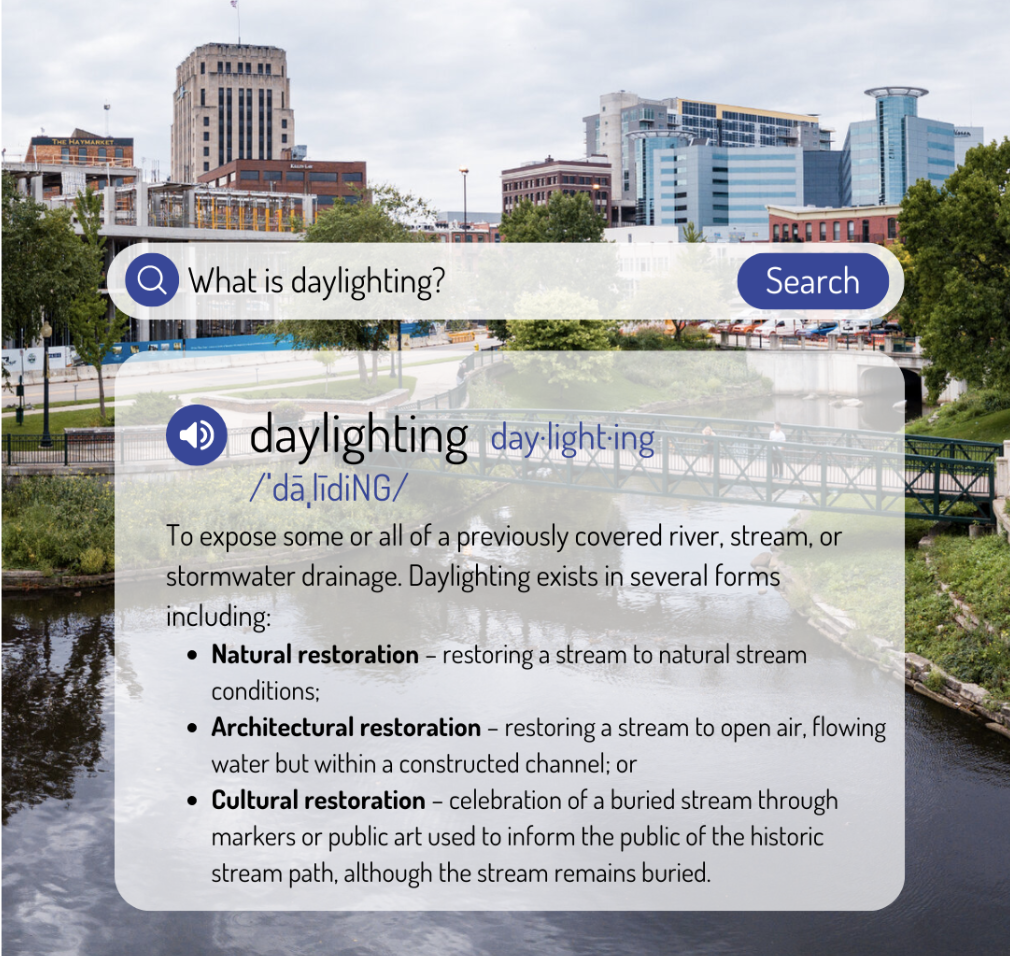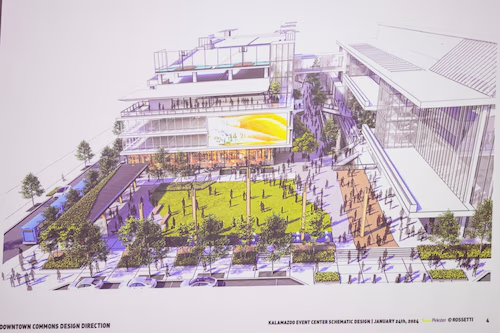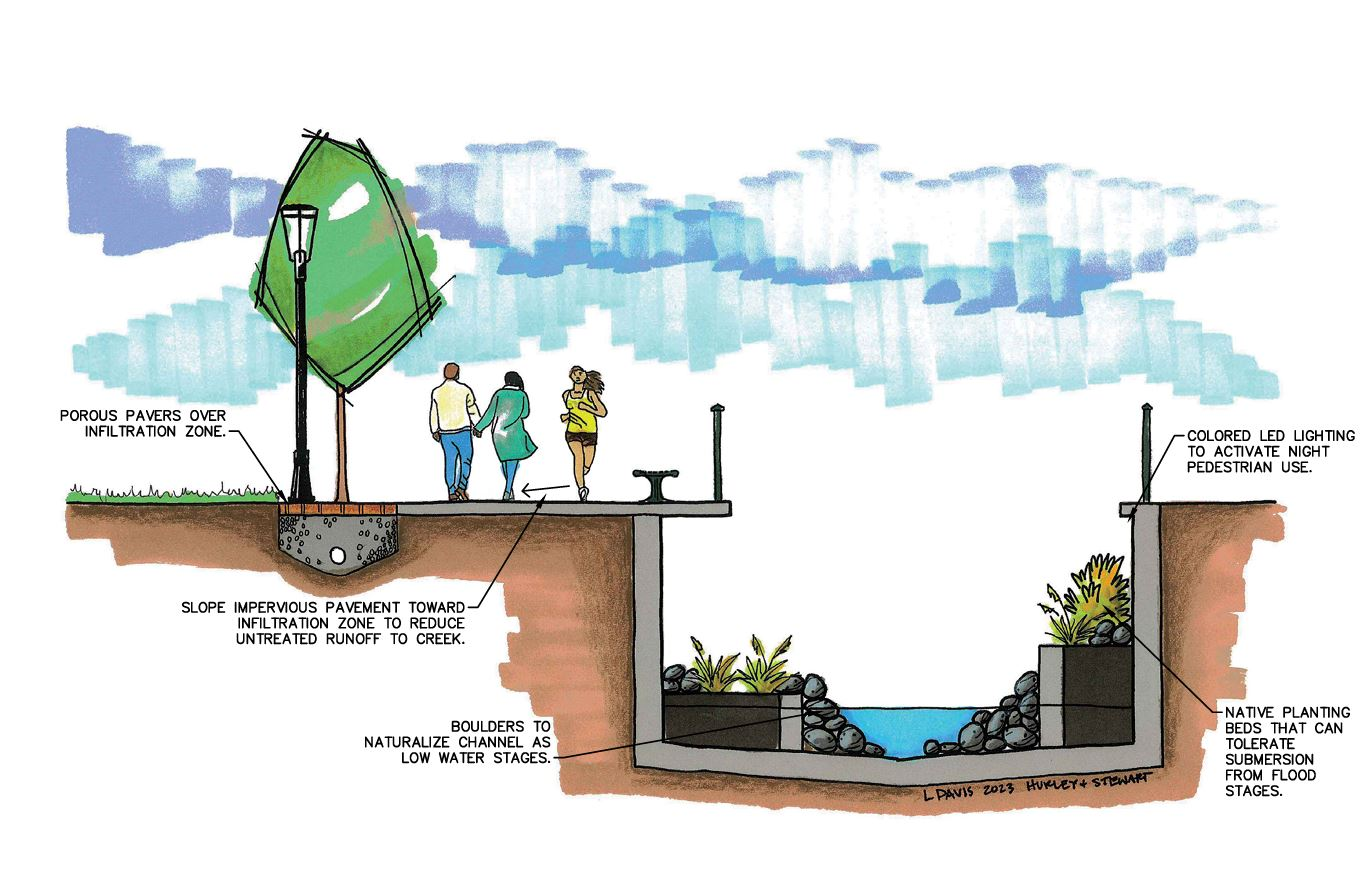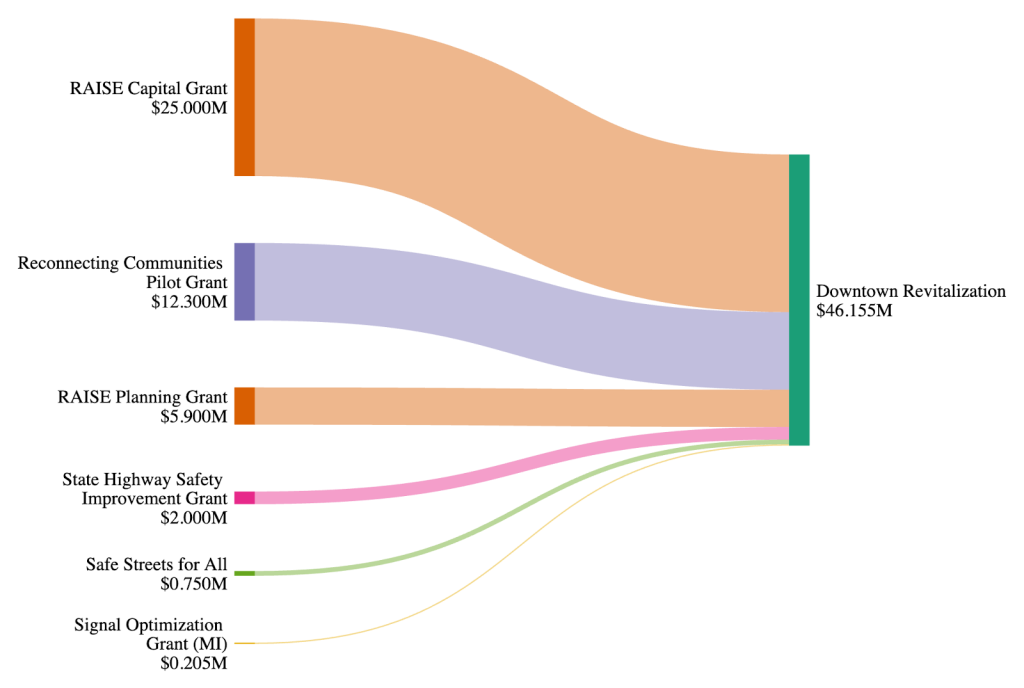Promoting Resilient Operations for Transformative, Efficient, and Cost-saving Transportation (PROTECT) Program Overview
The Promoting Resilient Operations for Transformative, Efficient, and Cost-saving Transportation (PROTECT) program, established under the Bipartisan Infrastructure Law (BIL), aims to enhance the resilience of surface transportation systems against natural hazards such as climate change, sea level rise, flooding, and extreme weather events. The program includes both formula and discretionary grants to support resilience planning, improvements, community resilience, and evacuation routes.
The Local Infrastructure Hub hosted a webinar in June 2023 on developing competitive PROTECT applications and released a resource on winning strategies for PROTECT grant applications available here. The next round of PROTECT Discretionary Grant Program funding is expected to be announced later in 2024.
|
PROTECT Discretionary Grant Types |
|
| Planning Grants | Development of resilience-improvement plans, resilience planning, predesign and design activities, capacity-building activities, and evacuation planning and preparation initiatives |
| Resilience Improvement Grants |
To enhance the resilience of existing surface-transportation infrastructure by improving drainage, relocating roadways, elevating bridges, or incorporating upgrades to allow infrastructure to meet or exceed design standards
* This case story discusses Kalamazoo’s Resilience Improvement Grant |
| Community Resilience and Evacuation Routes | To enhance the resilience of evacuation routes or to improve their capacity and add redundant evacuation routes |
| At-risk Coastal Infrastructure | To protect, strengthen, or relocate coastal highway and non-rail infrastructure. |
Considerations for municipal leaders
- What are the surface transportation assets at risk due to natural hazards, and what are those specific risks?
- How does the infrastructure support local community needs, including access to essential services, transportation links, and economic activities?
- What nature-based solutions can be utilized to enhance infrastructure resilience and minimize environmental impact, such as wetland restoration and riverbank protection?
- How can a city weave together discrete projects in a cohesive narrative to compete in multiple funding streams?
Building Resilience for Kalamazoo’s Transportation Network
Project at a Glance:
Project Leadership:
- Mayor David Anderson
- Rebekah Kik, Assistant City Manager, City of Kalamazoo
- Christina Anderson, Deputy Director Planning and Economic Development, City of Kalamazoo
- Dennis Randolph, Traffic Engineer, City of Kalamazoo
Location: City of Kalamazoo
Focus: Economic Mobility, Racial Equity
Overview: Braiding BIL Funding for Interconnected Projects
Kalamazoo’s 2017 master plan, Imagine Kalamazoo 2025, laid out a comprehensive vision for development in Kalamazoo that involved substantial infrastructure projects to redesign their street network, creating a more connected and accessible downtown area. Since then, Kalamazoo has been able to effectively leverage the Bipartisan Infrastructure Law, braiding together various funding sources, to realize that vision – including grants through Reconnecting Communities, RAISE, Safe Streets for All, and PROTECT for a variety of planning, demonstration, and capital projects for the City’s surface transportation network.
In February 2024, the Local Infrastructure Hub highlighted Kalamazoo’s success in competing for a Reconnecting Communities grant and a RAISE planning grant, both of which support the city’s work in converting one-way streets into two-way streets that are more conducive to the urban environment. This case story focuses on how Kalamazoo is leveraging a recently awarded PROTECT award to upgrade stormwater infrastructure for Arcadia Creek, enhancing the resiliency of their surface transportation assets and promoting future development.
Kalamazoo’s PROTECT award is allowing them to upgrade the stormwater infrastructure for Arcadia Creek. Currently, much of the creek is buried underground in pipes with insufficient capacity. While the City of Kalamazoo was able to do some work in the 1990s to increase capacity, due to resource limitations this only occurred in Kalamazoo’s downtown area. Now, with support from PROTECT, Kalamazoo is able to increase the capacity of their stormwater infrastructure. In doing so, they are creating new space for development, including a regional event center and a multi-modal path to connect nearby college campuses (Western Michigan University and Kalamazoo College) with the City’s downtown, and ensuring that their investments in the street conversions will be resilient to climate change.
Barriers to Connectivity in Kalamazoo
In the mid-20th century, like many American cities, much of Kalamazoo’s city street network was modified to be one-ways that could move vehicles through the city and to the interstate more efficiently. While the change successfully reduced the number of stops for drivers passing through the city, it came at the expense of Kalamazoo’s communities – namely, the predominantly Black and historically redlined Stuart and Northside neighborhoods that were separated from the city’s central business district by the resulting high-speed, high-capacity one way corridors.
Additionally, flooding of the Arcadia Creek has become more common due to a combination of increasing precipitation events and the existing stormwater infrastructure’s limited capacity. The resulting flooding creates an additional physical barrier between these communities and Kalamazoo’s downtown core. The creek itself, where it is channelized underground, bisects several properties which limit future development possibilities.
In their latest master plan, Imagine Kalamazoo 2025 (IK2025), the city created a roadmap for their projects, shaping the future of the city’s built environment. The plan’s primary focus is on land development and transportation, laying out a comprehensive vision that is guiding their applications for discretionary grants.
A key part of the IK2025 planning process was identifying ten goals for their strategic vision that focus on the development of a connected and sustainable city with inviting public places and abundant opportunities for all to prosper. The city’s successful FY2022 Reconnecting Communities implementation and RAISE planning grants have proven critical first steps in advancing the plan and the city’s equity vision. Most recently, the City was awarded a $25M RAISE Capital Grant for FY2024.
|
Imagine Kalamazoo 2025: Strategic Goals
|
Their recent PROTECT grant will support upgrades to the stormwater infrastructure, improving the resiliency and connectivity of new surface transportation assets and responding to more frequent flooding events from climate change. The street work has a clear connection to improving connectivity, in creating safer roads for all road users. Kalamazoo is creatively using the PROTECT-funded project to improve connectivity in a broader way – by daylighting the Arcadia Creek, the City is creating space for a new walking path that provides a direct connection from Western Michigan University and Kalamazoo College to the City’s downtown area just a mile away.

Arcadia Creek Stormwater Infrastructure
Arcadia Creek flows through Downtown Kalamazoo in a concrete channel with no natural openings, allowing sediment and pollutants to accumulate in the underground channel. Virtually all 5.5 miles of the creek receive stormwater flow from urbanized areas in the City. Within the creek’s floodplain there are over 70 structures at a high risk of flooding, including Western Michigan University’s power plant and several surrounding streets.
Flooding of the Arcadia Creek typically occurs during moderate and heavy storm events, which are happening with greater frequency due to climate change. The flooding occurs due to backwater, given the channel’s limited capacity. Essentially, water pools where the pipe goes underground and backs up from there because the water has nowhere else to go. Flooding also occurs aboveground along the path of the channelized creek due to topography. The current capacity of the stormwater infrastructure is less than one third of what is needed and the infrastructure includes sections that are beyond a normal 100-year lifespan.
In 2019, even with a recently installed stormwater pump station, over nine feet of water covered the entire football field at Western Michigan University’s stadium. A storm water study commissioned by Western Michigan University plus the city’s own storm system capacity report found that the stormwater infrastructure needs to be upsized. The studies also found that the undersized storm sewers limited the rate at which flood waters receded, prolonging the impact of moderate rainfall events and costing the city and university millions in repairs. During these flood events, residents of disadvantaged communities adjacent to Kalamazoo’s downtown are completely unable to access necessary resources including hospitals, law enforcement, daily needs, and more as the streets are impassable due to flood waters.
In the 1990s, the city successfully made some changes to the stormwater infrastructure for Arcadia Creek in the city’s downtown area; however, with limited resources, it did not allow for upgrades to the stormwater infrastructure between the downtown and the college campuses in Kalamazoo. These changes eliminated the downtown floodplain and significantly improved resilience and access. Additionally, this catalyzed significant private development in Kalamazoo and led to the development of Arcadia Creek Festival Place where the stream terminates at a pond. Arcadia Creek Festival Place hosts several regional summer events and serves as an open public space when not hosting an event; the park and its events generate an estimated $12 million per year in revenue for the regional economy. By enabling future development, the PROTECT-awarded project can have similar economic impacts.
The city, leveraging state and federal funds and following its master plan, IK2025, is making a significant investment in reconnecting its neighborhoods and improving traffic safety. The PROTECT grant will support the resilience of the redesigned road network, while simultaneously replacing and updating the aging stormwater infrastructure. The layering effect of both Reconnecting Communities and PROTECT will allow the city to “dig once” to protect the roads from flooding, minimize traffic and business impacts, support continuous connectivity for all residents, and leverage ongoing private investments discussed in the next section.
|
A New Event Center In 2023, in part thanks to their planned infrastructure upgrades, Kalamazoo was announced as the site of a new, $300 million development project. The Kalamazoo Event Center will be a state of the art facility with the capacity to host over 230 events annually while generating over $54 million of annual economic impact throughout the region. The new facility will play host to a variety of community events and conventions, and support programming for local groups such as Western Michigan University athletics and the Kalamazoo Wings, a professional hockey team and affiliate of the Vancouver Canucks. The center will create nearly 700 jobs and be wholly funded by private investors, not using any taxpayer dollars – a rarity for arena development in the U.S. Currently, the site is bisected by the channelized Arcadia Creek and impacted by the creek’s flooding. As such, the developer and city are working together to upgrade the stormwater infrastructure, which is defined as Phase Zero in the PROTECT-awarded project. |

Upgrading the Stormwater Infrastructure
The Arcadia Creek work will occur in several phases over the next 8-10 years, in conjunction with the two-way conversions on the street network. Phase zero will move existing and outdated stormwater infrastructure from the Event Center’s slated footprint to a location underneath Westnedge Avenue – one of the many Kalamazoo one-way streets slated for redevelopment. The developer for the Event Center will fund this phase to fulfill the local match requirement for Kalamazoo’s PROTECT award.
Following the completion of this phase, the City of Kalamazoo will then continue working to the west, towards the Western Michigan University and Kalamazoo College campuses, to increase capacity and modernize the aging and failing stormwater infrastructure. This work has four overarching goals:
- Daylight as much of the creek as possible to increase capacity and improve the stream’s health;
- Ensure those areas that cannot be daylighted have sufficient capacity;
- Remove all infrastructure and development from the floodplain; and
- Incorporate natural elements and design for multi-modal use of the area and improve connectivity.
Daylighting Streams Across America (Source)
|
Location |
Problem |
Solution |
|
Dunnes Creek, Indiana Dunes State Park, Indiana |
The Dunnes Creek was previously diverted through a pipe, enclosing the stream and serving as an incubator for E. coli bacteria. |
ARPA and FEMA funds supported the daylighting and restoration of the wetland, improving water quality and wildlife habitats. |
|
Kid’s Creek, Traverse City, Michigan |
Kid’s Creek was constrained by underground pipes resulting in increased risk of flooding and unsuitable habitats for trout. |
The daylighting effort will reduce flooding risk and improve 4,500 feet of stream for young trout to move upstream. |
|
Madrona Creek, Seattle, Washington |
One quarter mile of the Madrona Creek was diverted through pipes, limiting the viability of wildlife habitat. |
Over the course of three years, the daylighting effort reconnected the stream to Lake Washington and improved the habitat of the endangered Chinook salmon. |

Braiding Funding to Maximize Impact
Kalamazoo is fully leveraging the potential of the Bipartisan Infrastructure Law in their work to create a robust downtown, accessible to all, providing access to residents from the historically underserved and redlined, adjacent Northside and Stuart neighborhoods as well as Kalamazoo College and Western Michigan University, which are just a mile away from the downtown area. The work, guided by the IK2025 Master Plan, is utilizing funding from the Reconnecting Communities, Safe Streets for All, RAISE, and PROTECT federal programs, as well as state transportation programs.

The redesigned two-way street network funded through Reconnecting Communities and RAISE will provide tremendous support to Kalamazoo’s retail growth and private development potential. The City is also using a Safe Streets for All planning and demonstration grant to pilot different traffic calming measures and develop a comprehensive plan to reduce roadway deaths and serious injuries. The PROTECT grant’s investment in the Arcadia Creek stormwater infrastructure will ensure increased resiliency for the transportation infrastructure at large, and provide more opportunity for development and multi-modal transportation.
“We’re not dictating what happens [there], that’s for the market to determine. But what we’re doing, that Creek shouldn’t be like that, it shouldn’t be in the pipe in the first place, it’s not healthy for the creek, and it’s not healthy for the land uses that are there right now.” – Dennis Randolph, Traffic Engineer, City of Kalamazoo
Conclusion
Since passage of the Bipartisan Infrastructure Law, Kalamazoo has demonstrated how to braid together various funding sources for discrete projects in pursuit of a comprehensive community vision. Through the IK2025 process, they developed a series of priorities that have guided their work in infrastructure to create a safer and more connective transportation network for all, regardless of their means of transportation. That work is moving ahead thanks to grants from Reconnecting Communities, Safe Streets for All, and RAISE, all of which is paving the way for economic growth in the city.
Simultaneously, the City is leveraging a PROTECT grant to invest in their stormwater infrastructure for Arcadia Creek. This work eliminates an additional barrier to connectivity between the downtown and predominantly Black and historically redlined Stuart and Northside neighborhoods. The investment in upgrading the City’s stormwater infrastructure around Arcadia Creek also ensures that the new transportation network is resilient in light of increased precipitation events. This also supports future economic development, namely the new Event Center which is expected to bring a substantial economic impact to the City. The work, focused on daylighting the creek and ensuring that it no longer bisects properties, will enable the development of a multi-use path that connects to the college campuses just a mile west of the downtown area – ensuring that their downtown is more accessible and can grow as a hub of economic activity.
Accelerator for America would like to thank Drexel University Nowak Metro Finance Lab for their partnership in production of this case story for the Local Infrastructure Hub.




